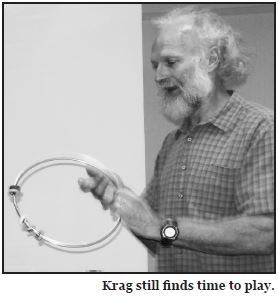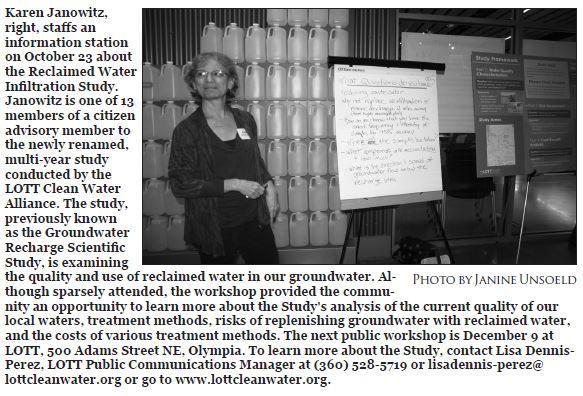President's Message - Land Speculation and Developmentby Krag Unsoeld This issue has an article by Jim Lazar on the controversial Trillium development proposal. The master plan for this development was originally submitted by DR Horton to the City of Olympia in 2005. It has been changed numerous times to respond to public concerns and city directives but is still being pushed by the developer. This is a common story that is played out repeatedly in communities and neighborhoods throughout the nation. A corporation comes up with an idea for what is variously called a master planned development, a planned unit development or an urban village. They submit their plan to the local government that has jurisdiction over the land where the proposal is situated, and then various interests begin to weigh in so that their perspective will be represented and, they hope, sway the outcome. Environmentalists raise concerns about stormwater, flooding and the loss of natural resource lands. A bit of history: When The Evergreen State College acquired the land for its development on Cooper Point in the late 1960s, it sparked a property speculation boom, and was the subject of the first piece of investigative journalism I wrote was for the Cooper Point Journal in 1976. I examined the impacts this speculation had on fixed income homeowners and the rural character of the Overhulse and Kaiser Road area. Driving the speculation was a Florida-based developer who wanted to do a mixed-use (housing, commercial, recreation, etc.) development. He formed limited partnerships that raised investment capital from Midwest and East Coast professionals seeking tax exemptions for their assets. These partnerships bought up houses and then sold them amongst themselves, driving up the price which in turn increased local land appraisals and property taxes. Fixed income homeowners often couldn't pay the higher property taxes and were forced to sell to one of the land speculation partnerships. This cycle had an ironic benefit for Evergreen students. After the Cooper Point Association exerted its influence to have the county limit development in the area through zoning and other restrictive policies, these properties were no longer going to have the immediate payoffs that had been desired. The houses were often run down and rented out by students, included Nanny Noodles, Sunny Muffin, Gray House, Red House, Maitreya, Pooh Corner, Calliope Farm, Through the Looking Glass, and Frog Farm. Sunbreak Farm, Calliope and Common Ground are current small farms that in part owe their existence to the legacy of this property speculation bubble around Overhulse Road. On the other side of the ledger are the churches on Overhulse and the housing developments at the corner of 11th and Overhulse, on 11th next to Common Ground and at the corner of 14th and Kaiser. Granted, these developments do concentrate development. However, they often occur in areas where there is little or no existing development. It is cheaper to build from scratch than it is to redevelop an area. This contributes to sprawl and the loss of natural resource lands. On the one side you have the developers, who hope to profit from the development, and on the other side you have the conservationists, farmers, and community members. These diverse interests engage in a development dance that helps determine how our communities grow. If we want to ensure sustainable communities then it is imperative that all of us play a part to make sure that our values are included in the final equation. Krag Unsoeld is President of SPEECH and can be reached at kragu@juno.com or (360) 250-9982.
Back to Home page. |


